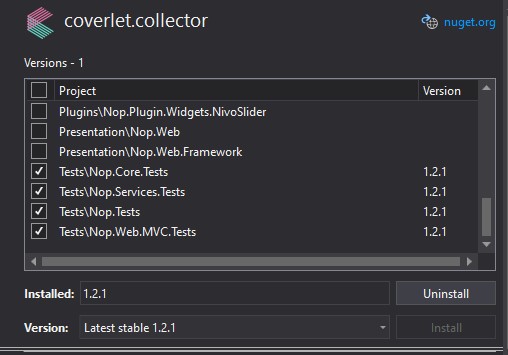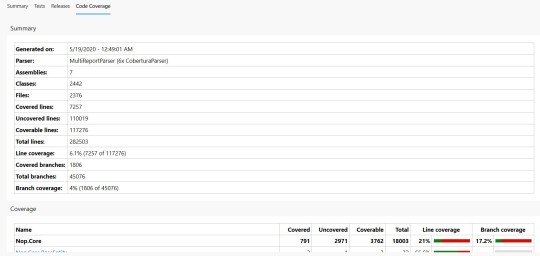Following on from the previous article, to add Code coverage to nopcommerce when building on Azure-Pipeline as your dev-ops pipeline, it is necessary to add the following nugets to the nopcommerce test projects:
Install Microsoft.CodeCoverage to the 4 test projects:

Install coverlet.collector to the 4 test projects:

It is also necessary to adjust your build pipeline, you can do this using the following in your `azure-pipelines.yml`
pool: name: Azure Pipelines steps: - task: DotNetCoreCLI@2 displayName: 'dotnet restore' inputs: command: restore projects: ./src/NopCommerce.sln - task: DotNetCoreCLI@2 displayName: 'dotnet build' inputs: projects: ./src/NopCommerce.sln arguments: '--configuration $(BuildConfiguration)' - task: DotNetCoreCLI@2 displayName: 'dotnet test' inputs: command: test projects: | ./src/Tests/Nop.Core.Tests/Nop.Core.Tests.csproj ./src/Tests/Nop.Web.MVC.Tests/Nop.Web.MVC.Tests.csproj ./src/Tests/Nop.Services.Tests/Nop.Services.Tests.csproj arguments: '--configuration $(BuildConfiguration) --collect "XPlat Code coverage"' - task: PublishCodeCoverageResults@1 displayName: 'Publish code coverage' inputs: codeCoverageTool: Cobertura summaryFileLocation: '$(Agent.TempDirectory)/**/coverage.cobertura.xml' - task: DotNetCoreCLI@2 displayName: 'dotnet publish' inputs: command: publish arguments: '--configuration $(BuildConfiguration) --output $(Build.ArtifactStagingDirectory)' - task: PublishBuildArtifacts@1 displayName: 'Publish Artifact' inputs: ArtifactName: '$(Parameters.ArtifactName)'
This will allow full code coverage results:

If only SonarCube was also enabled ;-p but we are not the authors, so that is for another tutorial!
Leave a comment